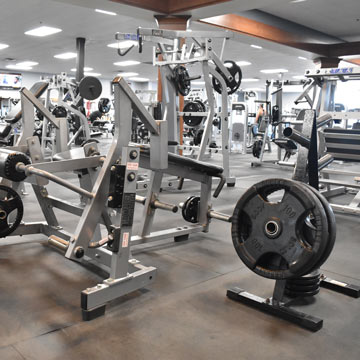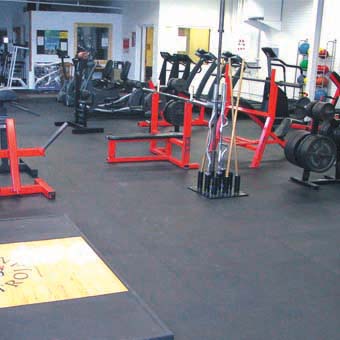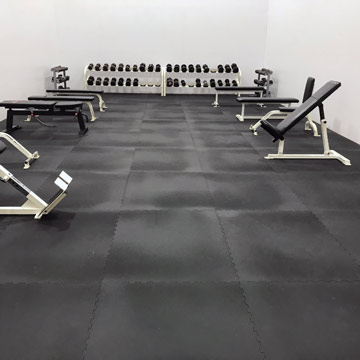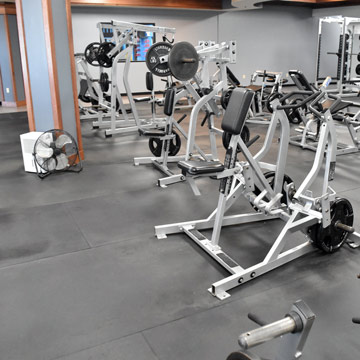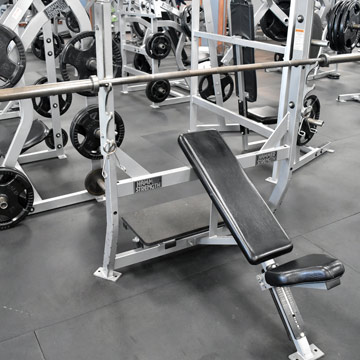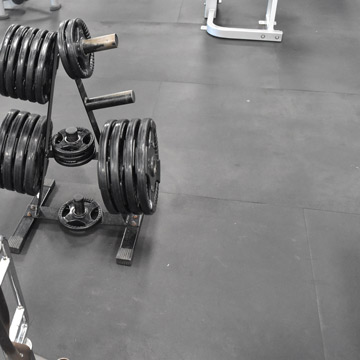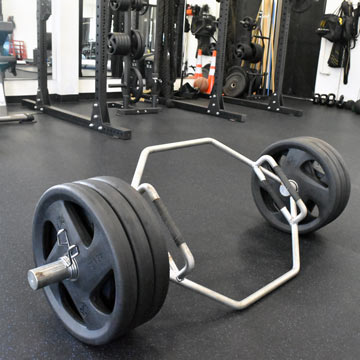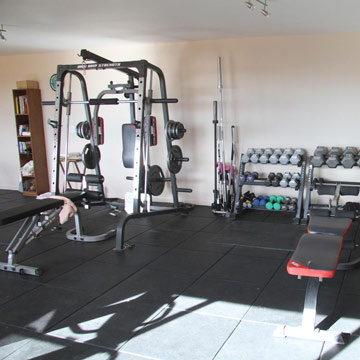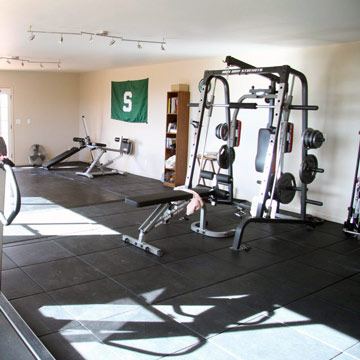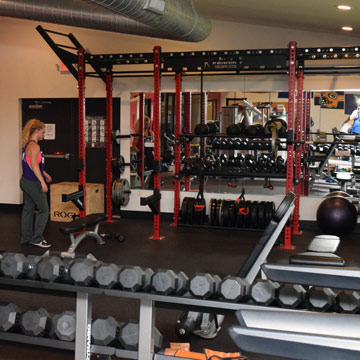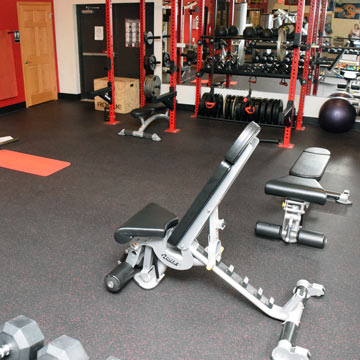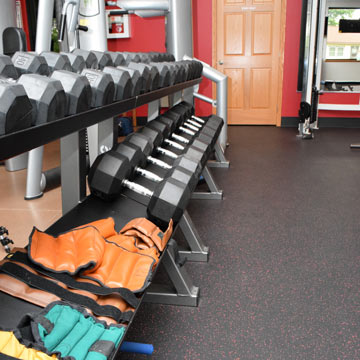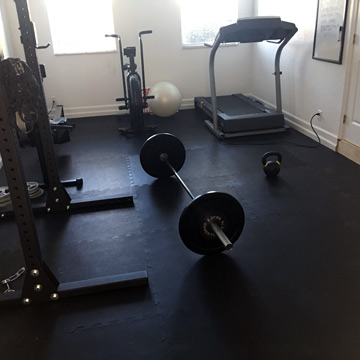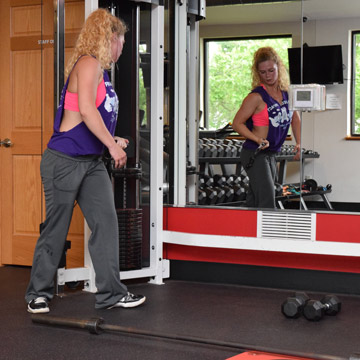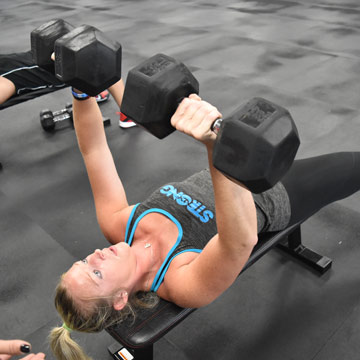Weight Room Flooring Options and Ideas
Related Product: Impact Zone Lifting Platform Rubber Roll 14.5 mm x 4x25 Ft.
- Protects The Subfloor
- Dampens Noise
- Reduces Vibrations
- Protects The Athletes Body
- Maximizes Output
- Protects The Weight Equipment
- Resists Bacteria/Mold/Mildew Growth
The most popular thickness for weight room flooring is 3/8 inch. 8mm (which is very similar in thickness) is becoming more frequently used, as it is less expensive than 3/8 inch and performs to the same standard. Thicker rubber is usually not necessary unless you are using heavy free weights. For areas where powerlifting and repeated dropping of heavy weights take place, 3/4-inch rubber is generally recommended. The thickest option we carry for weight room flooring is 2-3/4 inches.
Rolled Weight Room Flooring
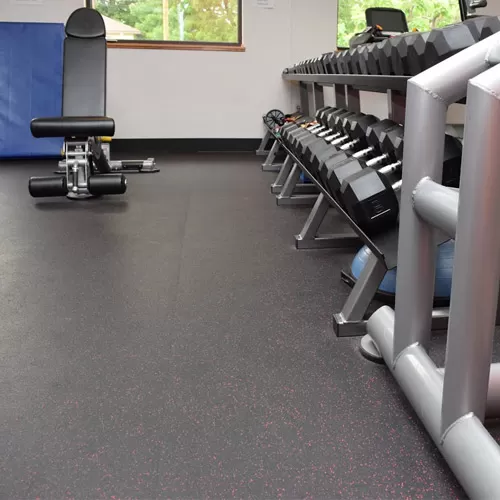
When it comes to economy weight room flooring, it's best to start looking into rubber flooring rolls. These are generally going to be your thinnest options and offer the best price point per square foot. If you've got a small or irregularly shaped weightlifting room, however, you'll find the rolled rubber installation will result in more wasted product as it is cut to fit the space.
Weight Room Floor Tiles
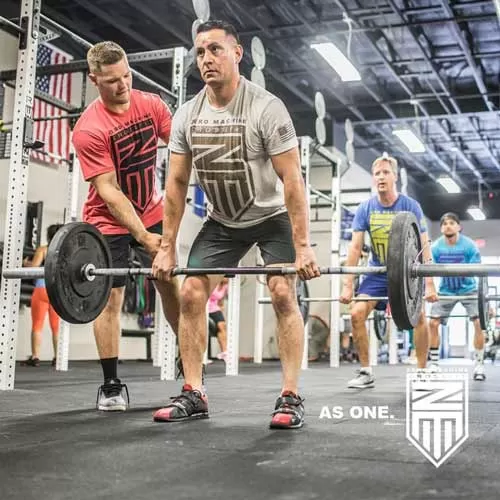
Customization is where interlocking rubber tiles come into play most. Ranging anywhere from 2x2 feet to 3x3 feet, these tiles are much more easily customized. They also have many more engineering options due to the fact they do not have to be thin enough to roll up. Lower-cost rubber weight room tiles will generally be flat on both sides and have puzzle-style edges. However, as you move up the quality scale, you'll find rubber gym floor tiles with a variety of different support structures on the underside of the tiles that are specifically designed to absorb shock, provide ''give'' for the athlete to reduce fatigue in his/her muscles and joints, reduce vibration, or reduce noise. With the specialty support systems also comes a greater thickness of tile and oftentimes the weight of the tile as well. In order to combat that weight factor, most rubber tiles of 1 inch or greater thickness will be 2x2 feet in size.
4x6 Weight Lifting Mats
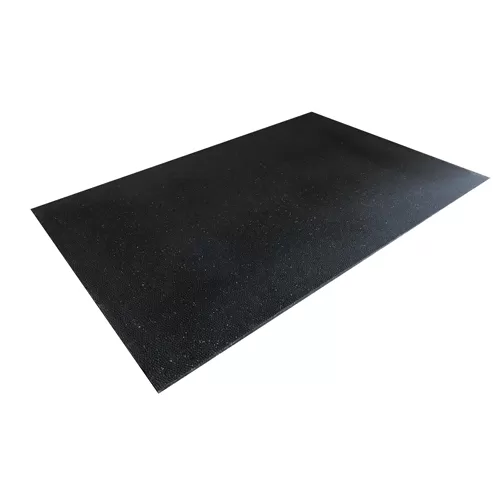
And then there are also the traditional 4x6 foot rubber horse stall mats. The most economical versions usually have straight edges and butt up next to each other. They are typically 1/2 or 3/4 inch thick and weigh around 100 pounds each. Many people will use horse stall mats of these sizes to save money, as they are extremely durable and do a great job of protecting concrete floors from dropped weight from Olympic weightlifting.
The difference you'll find between 4x6 mats that are designed for horse stalls and rubber flooring designed for weight rooms is the smell. Stall mats usually will have a much stronger rubber odor, while rubber gym mats generally use a lower-odor binder in the manufacturing process. Due to the strong smell of stall mats, we typically discourage these from being used in home gyms and weight rooms, especially where ventilation is lacking.
Lightweight Home Gym Flooring Options
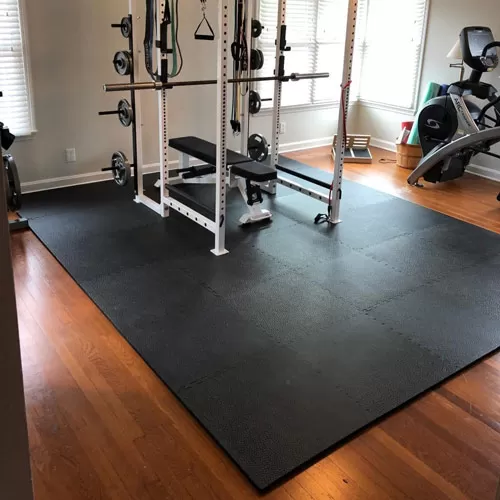
If you're looking for a lighter-weight gym flooring option, Greatmats does offer a couple of different thicknesses of super high-density EVA foam tiles with a pebble-style surface texture. These are great flooring options for weight rooms, but equipment and weights can leave small indentations in them that may not come out if the heavy objects are left in place for long periods of time. If you are considering foam for a weight room, we recommend that you disperse the weight under the equipment with a coaster of some sort.
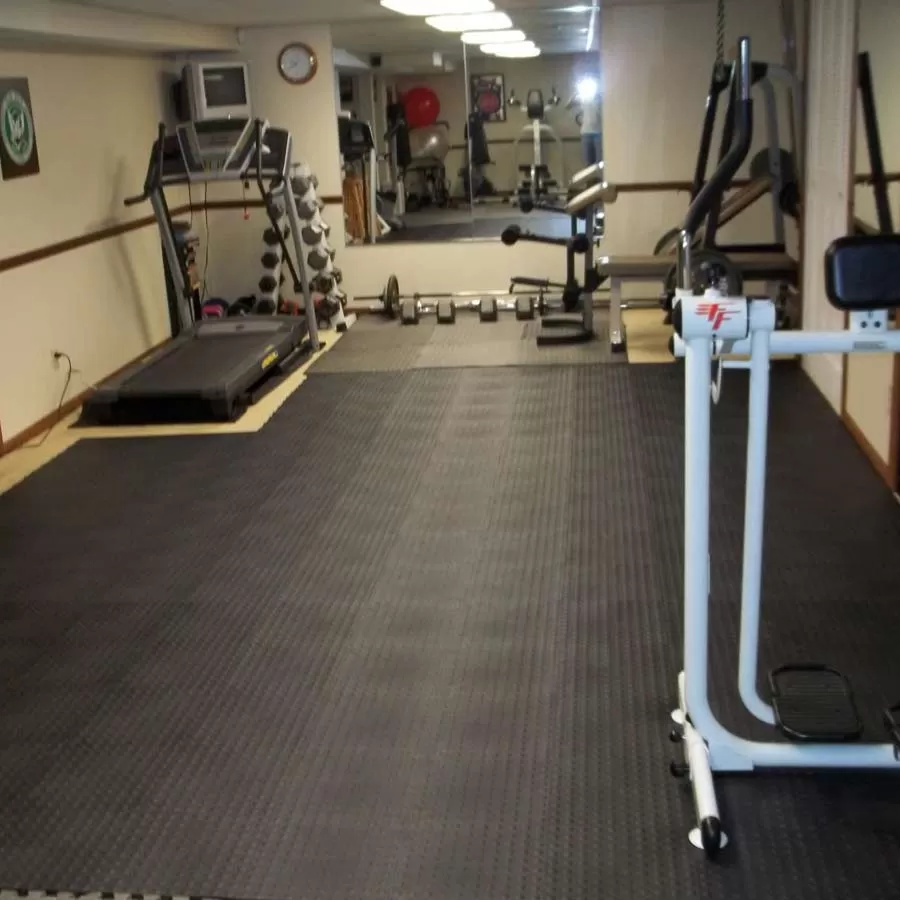
Plastic flooring such as our StayLock products is also great for home weight room floors. StayLock is rugged enough to handle the weights and equipment but also provides fatigue relief for athletes. Plus, they can be installed over carpet. We do not, however, recommend dropping weights intentionally on this type of flooring.
